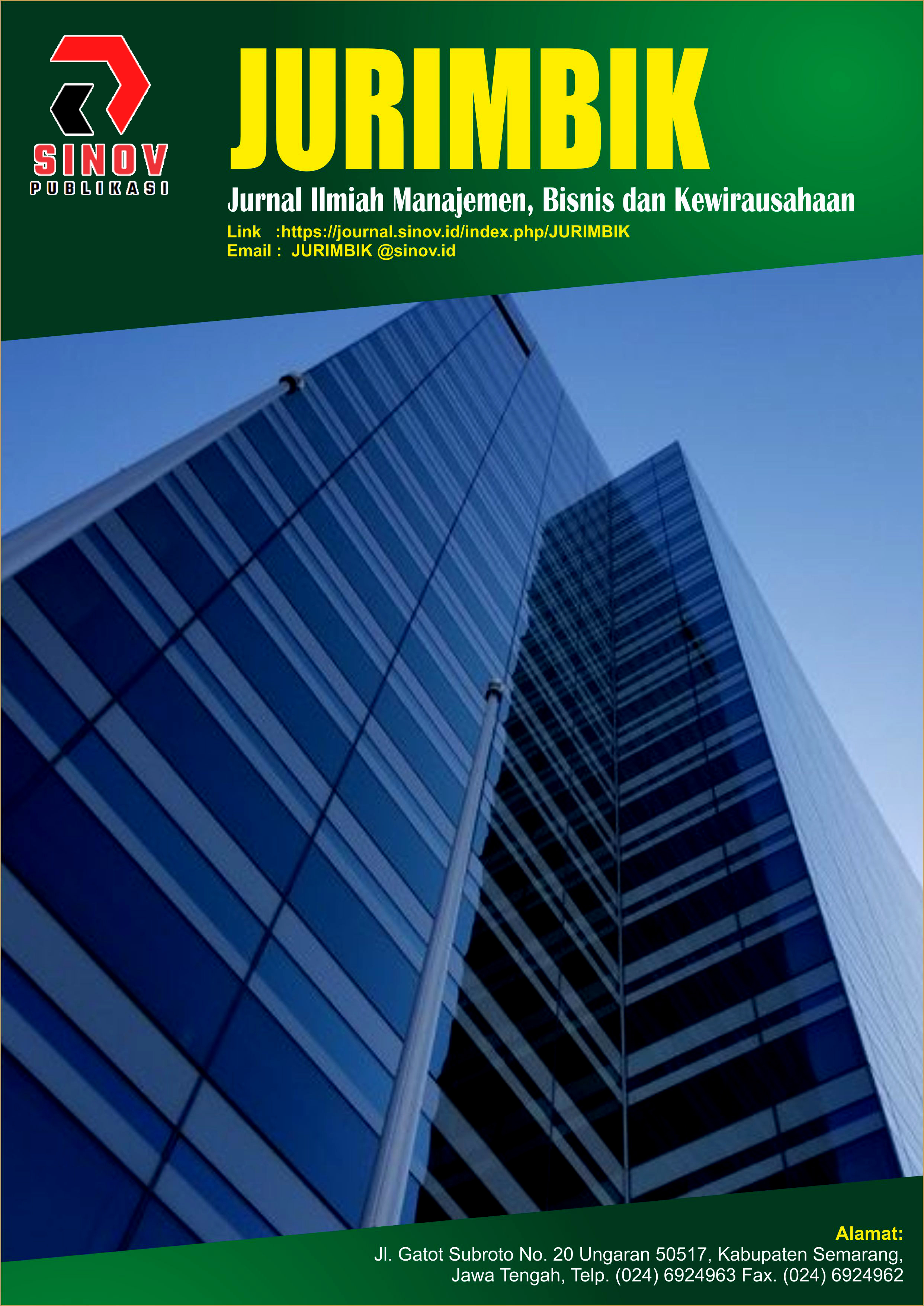Peran FDI Tiongkok dalam Mendorong Pertumbuhan Ekonomi Indonesia di Era Ketidakpastian Global
DOI:
https://doi.org/10.55606/jurimbik.v5i1.996Keywords:
Chinese FDI, consumption, economic growth, government expenditureAbstract
Abstract. This study aims to analyze the short-term impact of Chinese Foreign Direct Investment (FDI), government expenditure, and Gross Domestic Product (GDP) based on expenditure on Indonesia's economic growth amid global uncertainty during the 2010–2024 period. A quantitative approach was employed using time series regression with the Ordinary Least Squares (OLS) method. Prior to model estimation, data were tested for stationarity using the Augmented Dickey-Fuller (ADF) test. The results show that simultaneously, the three independent variables significantly influence economic growth. Partially, Chinese FDI has a positive and marginally significant effect, government expenditure shows a significant negative impact, while household consumption-based GDP exerts a strong and statistically significant positive influence on Indonesia's economic growth. These findings highlight the critical role of domestic consumption and effective government spending in promoting growth, as well as the need to enhance the quality of foreign investment.
Keywords: Chinese FDI, economic growth, government expenditure, consumption.
References
Afonso, A., & Jalles, J. T. (2019). Fiscal policy and economic growth: Do rules-based budgetary institutions make a difference? Applied Economics, 51(5), 529–544. https://doi.org/10.1080/00036846.2018.1497852
Barro, R. J. (2016). Economic growth and convergence. Journal of Political Economy, 124(4), 905–950. https://doi.org/10.1086/686037
Blanchard, O., & Johnson, D. R. (2020). Macroeconomics (8th ed.). Pearson.
Brooks, C. (2019). Introductory econometrics for finance (4th ed.). Cambridge University Press.
Gallagher, K. P., & Irwin, A. (2018). China’s Belt and Road and Latin America: A political economy perspective. Global Policy, 9(2), 121–129. https://doi.org/10.1111/1758-5899.12528
Gujarati, D. N., & Porter, D. C. (2009). Basic econometrics (5th ed.). McGraw-Hill.
Gujarati, D. N., & Porter, D. C. (2010). Essentials of econometrics (4th ed.). McGraw-Hill Education.
Gujarati, D. N., & Porter, D. C. (2017). Basic econometrics (5th ed.). McGraw-Hill.
Hair, J. F., Black, W. C., Babin, B. J., & Anderson, R. E. (2018). Multivariate data analysis (8th ed.). Cengage Learning.
Herzer, D. (2018). The long-run relationship between outward FDI and total factor productivity: Evidence for developing countries. World Economy, 41(2), 520–538. https://doi.org/10.1111/twec.12516
Kementerian Keuangan Republik Indonesia. (2023). Laporan ekonomi makro dan pokok-pokok kebijakan fiskal 2023. https://www.kemenkeu.go.id/
Liu, H., & Daly, K. (2020). China’s outward foreign direct investment and economic growth in developing countries. Economic Modelling, 86, 317–326. https://doi.org/10.1016/j.econmod.2019.09.018
Narula, R., & Pineli, A. (2019). Improving the developmental impact of multinational enterprises: Policy and research challenges. Multinational Business Review, 27(3), 223–242. https://doi.org/10.1108/MBR-09-2018-0060
Nugroho, R., & Yasin, M. (2021). The effect of government expenditure and investment on economic growth in Indonesia. Jurnal Ekonomi dan Kebijakan Publik, 12(1), 1–12. https://doi.org/10.22212/jekp.v12i1.2112
Putri, A. D., & Hidayat, M. R. (2021). Pengaruh konsumsi rumah tangga dan investasi terhadap pertumbuhan ekonomi di Indonesia. Jurnal Ekonomi dan Kebijakan Publik, 12(2), 134–145. https://doi.org/10.22212/jekp.v12i2.2234
Rahayu, S., & Kuncoro, M. (2023). Fiscal policy and economic growth in Indonesia: An empirical investigation using time series data. Journal of Indonesian Economy and Business, 38(1), 45–60.
Simanjuntak, R., & Dewi, N. (2019). Foreign direct investment and economic growth: Evidence from ASEAN-5 countries. International Journal of Economics and Management, 13(1), 75–89.
Sugiharto, B., & Purnama, A. (2020). The impact of Chinese FDI on Indonesia’s economic growth. Journal of Southeast Asian Economies, 37(2), 254–272. https://doi.org/10.1355/ae37-2g
UNCTAD. (2021). World Investment Report 2021: Investing in sustainable recovery. United Nations Conference on Trade and Development. https://unctad.org/system/files/official-document/wir2021_en.pdf
Wijaya, R., Lestari, D., & Santoso, H. (2022). FDI and employment in Indonesia: Evidence from sectoral data. Economic Journal of Emerging Markets, 14(1), 45–56. https://doi.org/10.20885/ejem.vol14.iss1.art5
Wooldridge, J. M. (2016). Introductory econometrics: A modern approach (6th ed.). Cengage Learning.
World Bank. (2023). Indonesia Economic Prospects: Managing economic headwinds. World Bank Group.
Zhang, W., & Du, Y. (2021). Belt and Road Initiative and China’s outward FDI: Policy synergy and economic impact. China Economic Review, 68, 101623. https://doi.org/10.1016/j.chieco.2021.101623
Downloads
Published
How to Cite
Issue
Section
License
Copyright (c) 2025 Jurnal Ilmiah Manajemen, Bisnis dan Kewirausahaan

This work is licensed under a Creative Commons Attribution-ShareAlike 4.0 International License.










